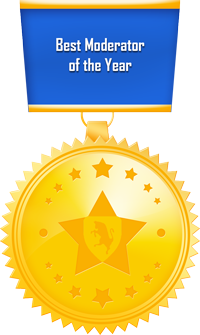Zacheryah, you're just not taking into account the difference between bodies of people. I have far more glute activation in a high bar squat than in a low bar squat. A low bar squat, even when well executed, just kills my hips and back.
And to be fair, to say that the high bar squat is a quad exercise is just plain wrong. Look at the glutes on olympic lifters. Now look at the glutes on powerlifters. The olympic lifter's ass is all muscle. The powerlifter's ass is just fat.
In no way is the high bar squat 'flawed'. It requires more flexibility and is downright healthier than a low bar squat. Sure, it doesn't allow you to use as much weight - which makes it safer.
All that being said, there are people who do very well with a low bar squat. I suspect you are one of them. And it can give you great general strength gains, there is nothing wrong with low bar squat as such.
Those are some pretty wrong points you are attempting to make there.
First of all, you are nobody. You arent close to mastering a squat, you are not relevant to the comparison. If i would go running backwards and say my calves felt more invovled compared to running normal, its because i'm shitty at running.
If Dimitry Klokov, or Dan Green talk about glutes activation, they actually are a reference. When Boris sheiko who has coached countless gold medal winners in
Both olympic and powerlifting says so, he's a reference. When Mike Tutchscherer or Louie Simmons talk about glute activation, they are a reference. One in raw, the other in geared and multigeared powerlifting.
Secondly, i've allready said you shouldnt do low bar squats if your back is not acclimatised for it. And the fat "it kills your hips" means your hipdrive is shit, your hip flexors are weak, and if those arent involved, you cant possible activate your glutes the proper way.
Thirdly, stop talking this utter nonsense cause you have 0 notion of mechanics. High bar squat is flawed because its less of a compound, and works under a less ideal torsion. "healthyer" is even bigger bullshit. Low bar spreads the load over more muscles, reducing the peak stress in the tendons and muscles. High bar puts significantly more strain on both the patella and quadriceps tendon. For the same weight, low bar is safer, if your back isnt behind, wich it never is for a powerlifter.
Fourthly, you are now comparing heavy weight powerlifters, very likely fatass multiply ones, to olympic lifters in weight category's. Olympic lifters dont nearly use their glutes as much, so they'll be developped less.
I'll repeat once more. Lowbar is for people with a strong back or powerlifters, who want to max the squat. High bar is for people who want to squat. front squat is for people who want to improve quadriceps.
One final word on "healthy". Olympic lifters typically dont last much over 30. Because their flexibility decreases, but mostly because their wrist, knee and hip join are destroyed. Powerlifters peak in their mid thirties, and can lift competitively easely in their 40ties, and when on TRT, pretty competitive aswel.
Thing is, if you arent squatting over 160kg, your type of squat doesnt matter.
Olympic lifting is just a preferable methodology for developing maximal speed strength in high-performance athletes. Even the fact that O-lifters in the sport science tests during the 68 Olympics out performed all other athletes in vertical jump, and in 25 metre sprint, gives evidence of the efficacy of Olympic lifting training methods for developing athleticism.
The '68 75kg Olympic Champion Kurentsov was tested at a vertical of 101cm, the exact same High Jump world record holder Valeriy Brumel. 160kg Olympic Champion Zhabotinsky was able to jump 90cm, which is absolutely ridiculous for a man that big.
The Tricoli study (2005) showed that O Lifting as a training methodology significantly outperformed vertical jump and sprint exercises over an 8 week period in terms of increasing vertical jump ability and 10 metre sprint ability.
The Hoffmann study (2004) of 15 weeks on football players showed O Lifting to have a significant advantage over P Lifting methodology in both vertical leap improvement, and 40 metre sprint times.
Olympic lifting is far more oriented towards explosiveness and agility, where as powerlifting also incorporates those, but has a much higher focus on strength. To excell at one, you must be build for it. You cant excell at both.
Belgiums finest olympic lifter, Tom Goegebuer, does okay'ish at powerlifting. Jeroen Van Heeswijk is competitive in IPF geared competitions, but not in olympic lifting.
However, you can now stop trying to stirr controverse. Powerlifters and Olympic lifters greatly respect eachother.
- - - Updated - - -
In terms of absolute strength there is only one king of exercises and it's not a squat

.
Correct. Unless your arms are very short and your torso is very long (aka your bench is amazing), the king of excercises is Deadlift.
Beeing a pretty strong deadlifter, i'm offcourse biassed.
- - - Updated - - -
I hurt my right shoulder forcing it when I couldn't do anymore.
It didn't hurt much that night, but today I woke up with a pain. Any idea or what is the best way to treat it?
@Zach @X
Go to the local building of your religion, and pray you didnt strain the rotator cuff.
After doing that, apply ice periodically
- - - Updated - - -

If we were really tough we'd be pulling off the 3-Bar Pause Squat... Front Squat Bar, Olympic Squat High Bar, and Powerlifting Low Bar. Boom! Beastmode!
On a side note. Overhead squats are a fucking brutal exercise.
Having done many different forms of squatting, i can testify the by far and away most brutal type is the "pauzed squat halfway on the way down" with 70-80% max weight, and 3-4 reps.
A regular pauzed squat in the hole is one thing, cause you are resting in the closed knee position, with calves holding the hamstrics up. "pauze halfway on the way down", means your hamstrics arent supported by anything other then your quadriceps pulling strength.
2 second pauze offcourse
 Buy on AliExpress.com
Buy on AliExpress.com



